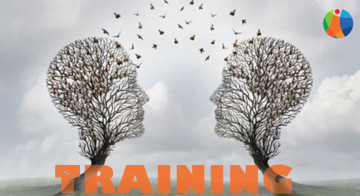This year, Dadaab, the world’s largest refugee complex, turns 20 years old.
Established in Kenya in 1991, as a response to the influx of Somalis fleeing their homes in midst of civil war, Dadaab was originally designed to host 90,000 people. As of this month, it holds around 450,000, [according to the UNHCR](http://data.unhcr.org/horn-of-africa/region.php?id=3&country=110).
With climate specialists now [predicting](http://www.irinnews.org/Report/94985/HORN-OF-AFRICA-Drought-warning-prompts-call-for-early-action) a return of last year’s drought conditions to the region, this number is expected to rise substantially within the next six months.
**Shaky Ground**
The future of Dadaab, however, appears increasingly uncertain and out of its inhabitants’ control. Citing the costs of the complex on the Kenyan government and people, as well as recent claims of stability by Somalia’s government, some Kenyan officials and commentators have begun campaigning for its closure and for the gradual repatriation of its inhabitants.
Daily Nation writer Randall Smith, for example, is [pushing](http://www.nation.co.ke/oped/Opinion/Time+to+shut+down+Dadaab+refugee+camp+/-/440808/1334400/-/uu7uh6z/-/index.html) for a plan with UN oversight that would have the settlement “cleared” in two years, guided by employment and resource incentives in residents’ home countries.
But while a long-term solution to Dadaab’s population that leads them back home sounds appealing, the reality of the situation is much more nuanced. And in simple logistical terms, for instance, moving Dadaab’s near half a million population would be the equivalent of emptying out the entire Republic of Cape Verde.
The economic and cultural implications of such a move are even more daunting. Nearly 260,000 of the complex’s population are under 18 years old, 10,000 of whom are now third-generation refugees, born from parents who were themselves born in the camps.
For many, Dadaab is the only home they have ever known, and disbanding this community would perhaps be as damaging to inhabitants as their parents’ and grandparents’ initial escape from Somalia.
**Social and Economic Development**
What is perhaps most misleading about Dadaab is its status as a refugee camp.
As Kenya’s third largest urban centre in terms of population, the complex is much more akin to a city than a camp, a reality reflected in its social and economic structures.
Through its 20 years of funding by at least 18 NGOs and international organisations, Dadaab has developed significant infrastructure and has a growing economy. It is home to three fully-functioning [hospitals](http://www.chathamhouse.org/publications/twt/archive/view/178591), with about 320 inpatient beds and three operating rooms. Primary schooling has been a priority for donor agencies and although facing crowded classrooms, about 38% of Dadaab’s children are now [enrolled](http://www.refintl.org/policy/field-report/somalis-kenya-invest-long-term) in 19 primary and 6 secondary schools within the complex.
Economic activity is also quite developed. Capital was initially [generated](http://jrs.oxfordjournals.org.ezproxy.soas.ac.uk/content/13/2/205.abstract) through the partial sale of food rations, but today, inhabitants can count on NGO loan programmes for economic activities such as cloth production and livestock slaughtering, as well as contributions from diaspora communities and income from donor-based employment.
There are estimated to be around [5000](http://www.guardian.co.uk/global-development/2011/sep/08/dadaab-somali-refugees?INTCMP=ILCNETTXT3487) businesses operating within the complex, with an annual turnaround of $25 million.
The social and economic structures established in Dadaab would not be likely to survive a repatriation process and would cost many their current livelihoods.
**Costs for Kenya**
Dadaab has developed as an economic centre in a region that has traditionally been based on pastoral communities. The impact on local population has been mixed.
On the plus side, the complex’s establishment has brought in significant aid revenue as well as economic activity. It is estimated that local communities make about $1.8 million a year in livestock sales to Dadaab.
However, animosity between refugees and local Kenyans has also developed, particularly over the management of scarce resources. Access to water and firewood has been a specific source of friction between the two communities, with the ever-growing refugee population utilising the goods in a way that is not sustainable.
During times of drought, this tension is exacerbated by aid disbursement to refugees that outweighs assistance to local communities. Unequal access to resources has motivated an estimated 40,000 Kenyans to register fraudulently as refugees.
Security has also been a growing concern for Kenya, which has been directly engaged in combating al Shabaab in Somalia. Recent [kidnappings](http://www.reuters.com/article/2011/10/13/us-kenya-kidnap-idUSTRE79C2T420111013) of two aid workers within Dadaab as well as [incidences](http://www.bbc.co.uk/news/world-africa-16247634) of violence within the complex have led to increasing concerns by Kenyan policy makers of the spill-over effects of Somalia’s conflict.
**Should I Stay or should I Go?**
Kenyan [calls](http://www.thebridgem.com/index.php?option=com_content&view=article&id=474:kenya-plans-to-relocate-many-thousands-of-somali-refugees&catid=36:horn-of-africa&Itemid=54) for repatriation come as part of a long-running tug of war between Kenyan officials and international donors. While the latter consistently [argue](http://www.refintl.org/policy/field-report/somalis-kenya-invest-long-term) for more investment in infrastructure and development that aim at bettering the life of Dadaab’s residents, many Kenyans are wary of such investments because they may provide more incentives for refugees to stay at Dadaab.
In the long term, this [battle](http://www.guardian.co.uk/world/2011/aug/11/somali-refugees-kenya-camp-empty) between Kenyan officials and donor agencies will probably remain a stalemate, without winners but instead only losers – Dadaab’s near half-million (and growing) population.
These inhabitants are likely to remain in the state of permanent impermanency that has become so familiar to them in the past 20 years. Their only hope is that there is significant change in the political and social climate in Somalia, or that there is a shift in Kenya’s refugee policy that allows Dadaab’s residents to be incorporated into Kenyan society officially (as nearly 168,000 Burundian refugees in Tanzania were [allowed](http://news.bbc.co.uk/2/hi/8625429.stm) to be).
At this moment in time, neither of these eventualities appears particularly likely and, in all probability, Dadaab’s people will remain in one of the least desired urban centre in the world for years to come, or face further displacement.
****
This article was first published by [Think Africa Press](http://thinkafricapress.com/kenya/dadaab-unwanted-city) | 2102 [Human Wrongs Watch](http://human-wrongs-watch.net/)





